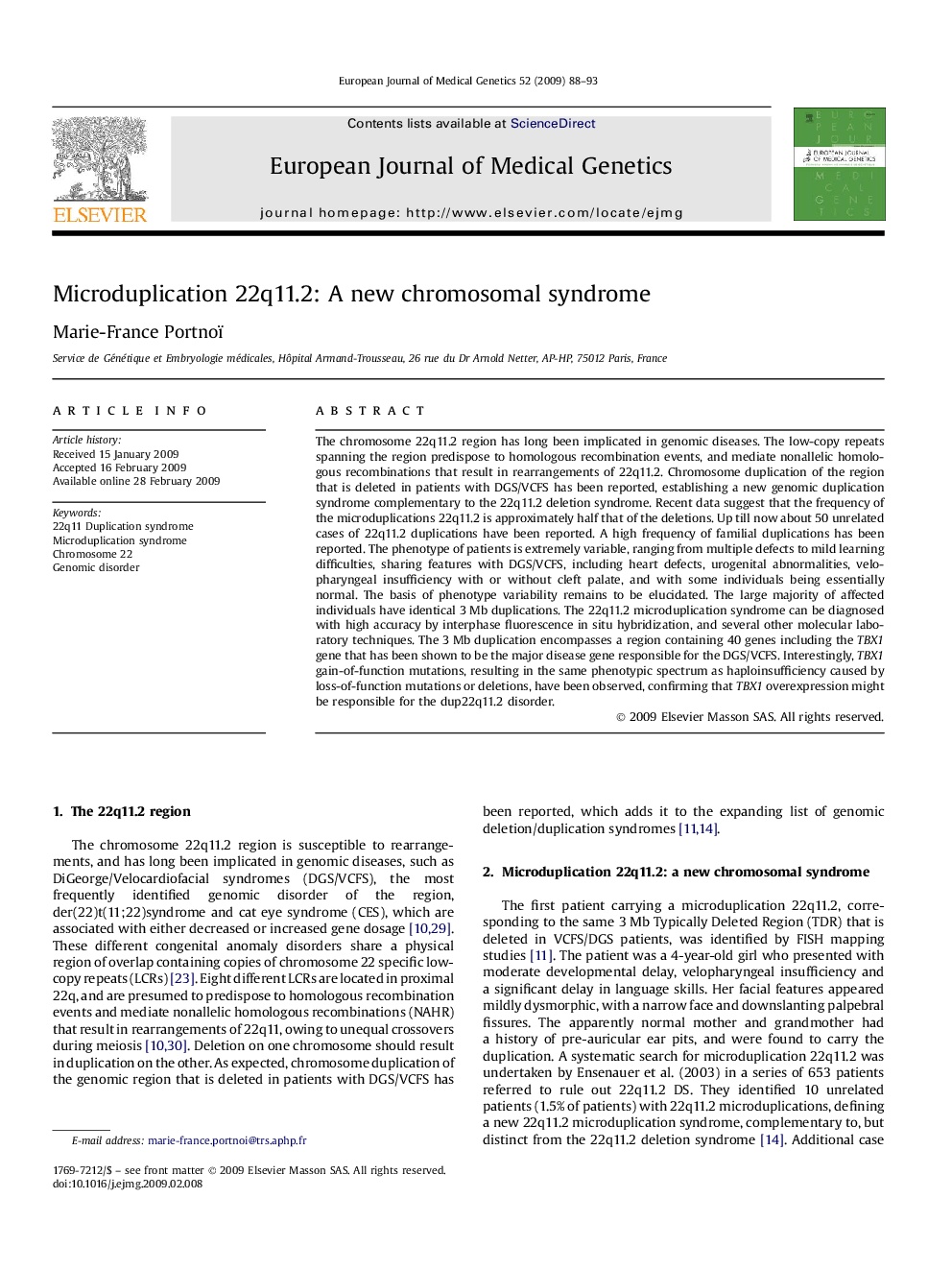| Article ID | Journal | Published Year | Pages | File Type |
|---|---|---|---|---|
| 2814591 | European Journal of Medical Genetics | 2009 | 6 Pages |
The chromosome 22q11.2 region has long been implicated in genomic diseases. The low-copy repeats spanning the region predispose to homologous recombination events, and mediate nonallelic homologous recombinations that result in rearrangements of 22q11.2. Chromosome duplication of the region that is deleted in patients with DGS/VCFS has been reported, establishing a new genomic duplication syndrome complementary to the 22q11.2 deletion syndrome. Recent data suggest that the frequency of the microduplications 22q11.2 is approximately half that of the deletions. Up till now about 50 unrelated cases of 22q11.2 duplications have been reported. A high frequency of familial duplications has been reported. The phenotype of patients is extremely variable, ranging from multiple defects to mild learning difficulties, sharing features with DGS/VCFS, including heart defects, urogenital abnormalities, velopharyngeal insufficiency with or without cleft palate, and with some individuals being essentially normal. The basis of phenotype variability remains to be elucidated. The large majority of affected individuals have identical 3 Mb duplications. The 22q11.2 microduplication syndrome can be diagnosed with high accuracy by interphase fluorescence in situ hybridization, and several other molecular laboratory techniques. The 3 Mb duplication encompasses a region containing 40 genes including the TBX1 gene that has been shown to be the major disease gene responsible for the DGS/VCFS. Interestingly, TBX1 gain-of-function mutations, resulting in the same phenotypic spectrum as haploinsufficiency caused by loss-of-function mutations or deletions, have been observed, confirming that TBX1 overexpression might be responsible for the dup22q11.2 disorder.
